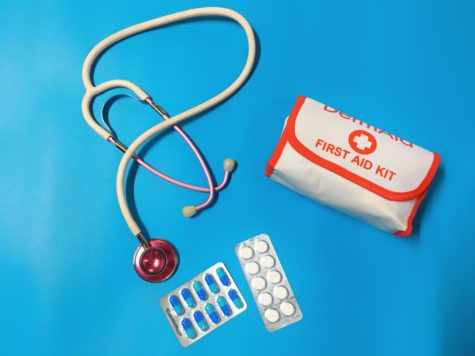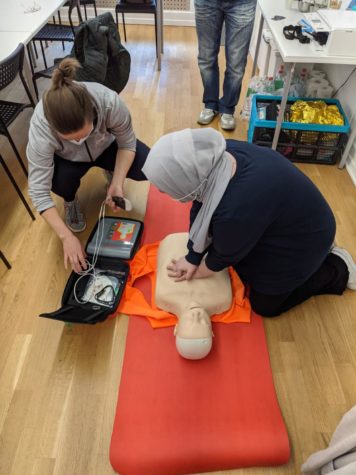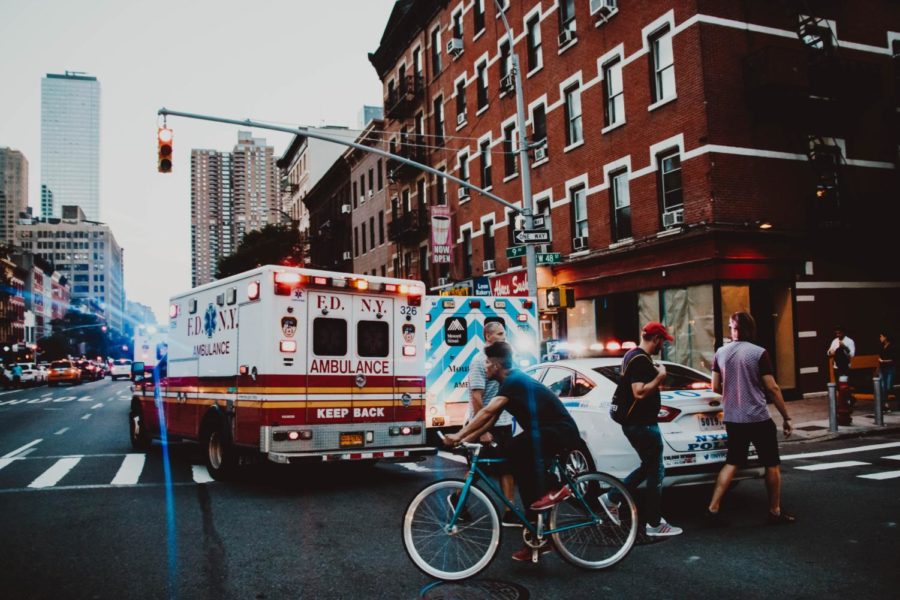Why You Should Learn First Aid
Learning first aid can enable you to help others and yourself in situations where medical care is necessary.
It is imperative to know if and when to call 911 in case of a medical emergency. It can help to save a life.
Do you know what to do in a medical emergency? According to the American College of Emergency Physicians, about half of U.S. adults are not adequately prepared to help others in the case of a medical emergency. At first glance, this may not seem like an issue— you can call 911 in an emergency, after all, and help will be on its way soon enough. However, this does not mean that first aid is not important. The British Red Cross reported that up to 59 percent of deaths from injuries could be prevented if the victim had received first aid prior to the arrival of emergency medical services.
Being able to effectively perform first aid on someone can, in many cases, mean the difference between life and death. Take CPR, for instance. CPR, or cardiopulmonary resuscitation, is performed in response to cardiac arrest. Cardiac arrest can have devastating consequences if not quickly responded to, including brain damage, organ failure, and even death.
Several months ago, Damar Hamlin, a football player, collapsed on the field due to a sudden cardiac arrest. The game promptly stopped while he received medical attention that saved his life. He is now doing much better and has been cleared to return to play football. Unfortunately, this isn’t common: according to the CDC, about nine in ten of those who experience cardiac arrest outside the hospital die. And over 350,000 cardiac arrests occur each year outside of the hospital.
While some may think that in an emergency such as cardiac arrest, the best thing they can do to help is to stand by and call 911, that is simply not true. In 2022, the average time it took for New York City ambulances and firefighters to respond to “life-threatening medical emergencies” was nine minutes and thirty seconds. This is particularly devastating when responding to cardiac arrest, as CPR must be performed as soon as possible to maximize the victim’s chances of survival. If CPR is not performed within the first six minutes of someone experiencing cardiac arrest, there is a high likelihood of the victim sustaining brain damage.
Of course, this does not mean that you shouldn’t call 911 if you suspect someone is experiencing cardiac arrest. But since waiting for an ambulance can take several minutes — minutes that are crucial in determining whether the cardiac arrest victim survives— it is vital to act as soon as possible. Receiving CPR from a bystander can greatly increase a victim’s chances of survival, so it is incredibly important to understand the signs of cardiac arrest and be able to respond appropriately and in a timely manner.

However, some may be hesitant to perform CPR for various reasons. Performing CPR can appear daunting to someone who has never done it before. Also, without proper CPR training, it may be difficult for someone to identify whether or not the victim is experiencing cardiac arrest, and some may be scared to cause further injury to the victim. The reasons for not performing CPR can also unfortunately be linked to the victim’s race, gender, or both.
The American Heart Association stated that, compared to 45% of men who received bystander CPR in public, only 39% of women experienced the same. Men also have a higher likelihood of surviving a cardiac arrest compared to women. This disparity may be due to bystanders fearing that they will be accused of sexual assault if they perform CPR on a woman. This is absolutely not true. Sexual assault is unwanted sexual contact, not performing chest compressions after a sudden cardiac arrest. In addition, Good Samaritan laws in New York State protect bystanders who perform CPR. In the event of a cardiac arrest, it is much more important to save someone’s life rather than to be scared about the potential repercussions of doing so.
Race can also be a factor in who receives CPR. According to WebMD, Black and Hispanic Americans are up to 37% less likely to receive bystander CPR for cardiac arrest than white Americans. This is a disparity that also persists among children. “Some of this disparity may be due to lack of training,” Dr. Anezi Uzendu, a cardiovascular research fellow at Saint Luke’s Mid America Heart Institute, said about the racial disparities involved in CPR. “Some of it may be due to structural racism. Some of it may be due to implicit or explicit biases.”
Misconceptions about CPR can also impact whether or not it is performed. For example, a common myth about performing CPR is that you need to provide mouth-to-mouth resuscitation for it to be effective. This is not true — experts agree that bystanders should perform hands-only CPR (chest compressions) in the event of a cardiac arrest. Not only is hands-only CPR just as effective as conventional CPR, it is easier to learn and people are more likely to perform hands-only CPR.
Hands-only CPR is fairly easy to learn, and can even be taught in school settings. Students are taught to push hard and fast in the middle of the victim’s chest, giving 100 to 120 compressions per minute. This can be done to the beat of a fast song such as “Stayin’ Alive” by the Bee Gees or any other song that has around 100 beats per minute— there are several playlists online with songs that can be used to help perform CPR.

Beyond CPR, it is essential to learn first aid for many reasons. Having some knowledge of first aid when someone is suffering a minor injury can help lessen their pain and determine when to seek medical attention. It can also prevent injuries from worsening. Injuries can happen to anyone at any time, and being prepared can enable you to help yourself and others the best you can.
Other myths about first aid, even in non-life threatening injuries, can be potentially harmful when applied in real situations. In a first aid survey I created and sent out to 200 students (eighteen responses were received), a question asked what they would do in case they witnessed someone experiencing a nosebleed.
Eight students responded that they would advise someone with a nosebleed to tilt their head back, but that can be more harmful than helpful — it may cause the blood to go down your throat, possibly leading to choking or vomiting. The correct first aid protocol for a nosebleed is to lean your head slightly forward and apply pressure to your nostrils for at least five minutes.
Another case in which knowing first aid is especially important are burn injuries. According to the American Burn Association, people in the United States sustain an estimated 486,000 burn injuries per year. According to a study conducted by researchers about cooking-related burns in children, an estimated 85% of burns in children are related to cooking in some way.
Common myths about what to do in case of a burn injury can harm people more than they help them. One myth about treating burn injuries is that you should apply butter to the injury, but that can actually increase the risk of infection. Additionally, ice should never be placed directly on a burn injury as it can worsen the burn. If you or someone else experiences a minor burn injury, you should cool the burn with cool running water for at least ten minutes.
Myths in first aid like these, while not as threatening as incorrectly performing CPR, can still be detrimental to a person’s health. Taking the time to educate yourself on the proper first aid protocols can help prevent minor injuries from worsening and enable you to help yourself and others. “Knowing first aid can help in major emergencies and make people more confident,” said Vaylyn Peterson ’25. “I’ve gotten cuts and burns while baking and cooking which I have not been able to heal as well as I could have if I knew first aid.”
If you’re interested in expanding your knowledge of first aid, there are many resources available both online and in-person. Simply typing “first aid” into a search bar leads to many websites offering instructional videos, explanations, and more. Many videos are available online showing the proper techniques for performing hands-only CPR, as well as various other first aid protocols. By taking the initiative to educate yourself on first aid, you are doing more than just watching videos and reading articles — you are taking an important step to being able to help yourself and others if an emergency should occur. “We have a responsibility to each other and to our society to be as informed as possible,” said Hallel Abrams Gerber ’24.
Having some knowledge of first aid when someone is suffering a minor injury can help lessen their pain and determine when to seek medical attention. It can also prevent injuries from worsening. Injuries can happen to anyone at any time, and being prepared can enable you to help yourself and others the best you can.
Marissa Talushllari is a Copy Chief for ‘The Science Survey.' She likes journalistic writing because it is a way of informing the public about important...











